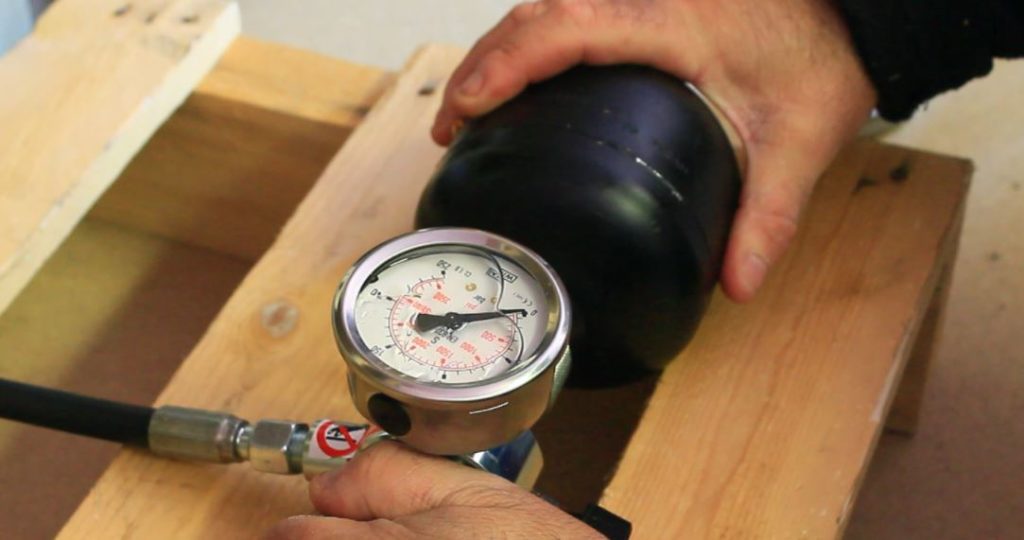
Pre-charge Pressure Too High
This can cause operational problems or damage to accumulators. With a piston accumulator, the piston will travel too close to the hydraulic end cap and causing the piston to bottom out, reducing output and eventually damaging the piston and piston seal. The piston can, often, be heard bottoming, warning of impending problems. In a bladder accumulator, the bladder can be driven into the poppet assembly when discharging. This can cause a fatigue failure of the poppet spring assembly or even a pinched bladder. Excessive pre-charge pressure is the most common cause of bladder failure.
Pre-charge Pressure Too Low
This can, also, cause operating problems and subsequent accumulator damage. With no pre-charge in a piston accumulator, the piston will be driven into the gas end cap and will, often, remain there. Usually, a single contact will not cause any damage, but repeated impacts will eventually damage the piston and seal. Conversely, for a bladder accumulator, too low or no pre-charge can have rapid and severe consequences. The bladder will be crushed into the top of the shell and can extrude into the gas stem and be punctured. One such cycle is sufficient to destroy a bladder. Overall, piston accumulators are generally more tolerant of incorrect pre-charging pressures.
Pre-charging Too Fast
If a bladder accumulator is charged too fast, high-pressure nitrogen, expanding rapidly becomes cold and chills the bladder. The chilled, brittle rubber, also expanding rapidly, could potentially rupture. The bladder could, also, be forced under the poppet and torn.

